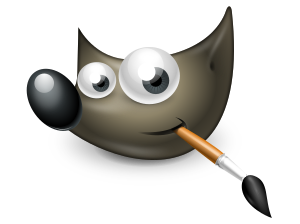GIMP
News
Docs
Tutorials
More
Please use only permissive licensing, such as CC-BY or CC-BY-SA. Something like the following works well:
 GIMP Tutorial - TITLE (text & images) by Pat David is licensed under a Creative Commons Attribution-ShareAlike 3.0 Unported License.
GIMP Tutorial - TITLE (text & images) by Pat David is licensed under a Creative Commons Attribution-ShareAlike 3.0 Unported License.
You can use standard Markdown formatting for posts. We have a short Markdown reference here on gimp.org if you want to see it with our styling.
This page is generated from a Markdown source. The source .md file for this page can be found on GIMP-web git:
https://git.gnome.org/browse/gimp-web/plain/content/tutorials/template/index.md
Pelican makes it easy to generate a Table of Contents for your tutorial based on headings.
Just include [TOC] on a line by itself where you’d like an automatic TOC list generated.
Table of Contents:
Consider your content as an outline first if possible. This will help you visualize the heading breakdown and will make it easier for readers to follow your content.
Headings in Markdown are denoted using two different syntaxes (setext and atx).
Usually the <H1> element of a page is already being used for a title, so the tutorial should use at most H2 and below.
Thus, the easiest way to denote headings is using the atx-style:
# This is an H1
## This is an H2
### This is an H3
...
###### This is an H6
Try to use logical heading structure for your tutorials. It helps if you consider your tutorial as an outline first.
Markdown links are written in one of two ways, inline or reference. The link text is delimited using [square brackets] in both ways.
Inline links are created by:
Here's a link to [GIMP.org](https://www.gimp.org)
Reference links follow the link text with square brackets again with a label or reference for the link. Then anywhere else in the document the link label is defined with the url:
Here's a link to [GIMP.org][wgo]
...more content...
[wgo]: https://www.gimp.org
Note: another type of reference link that works with our flavor of Markdown is to forgo the ref name, and instead refer to the link text:
Here's a link to [GIMP.org][]
...more content...
[GIMP.org]: https://www.gimp.org
The tutorial file structure tries to be self-contained. This means that you should try to keep any assets needed for the tutorial together in the same directory (this helps with portability in case the tutorial gets used somewhere else).
You can insert images using Markdown like this (but should really use the <figure> option
described below):

You can also use plain html (the Markdown parser will pass it through to the output page):
<img src="wilber-big.png" alt="Alt Text">
In either case, the results will be the same:

There is a better way, though…
It may make more semantic sense to encapsulate images inside of <figure> tags.
This will also allow the use of a <figcaption> element to provide a caption:
<figure>
<img src="wilber-big.png" alt="Alt Text">
<figcaption>
A caption for the image/figure.
</figcaption>
</figure>
Which will result in:

Use this form wherever an image is to be included (which should be almost always). (Possible exception use-cases might be right/left aligned small images that don’t require a full figure+caption).
For consistency, there is a pre-defined class for referencing menu commands in GIMP, such as:
Which can be accomplished using class='GIMPCmd' on a div (or a <span> or <kbd>):
<div class='GIMPCmd'>Filters → Blur → Gaussian Blur</div>
This is used when referring to operations that require menu interactions with GIMP.